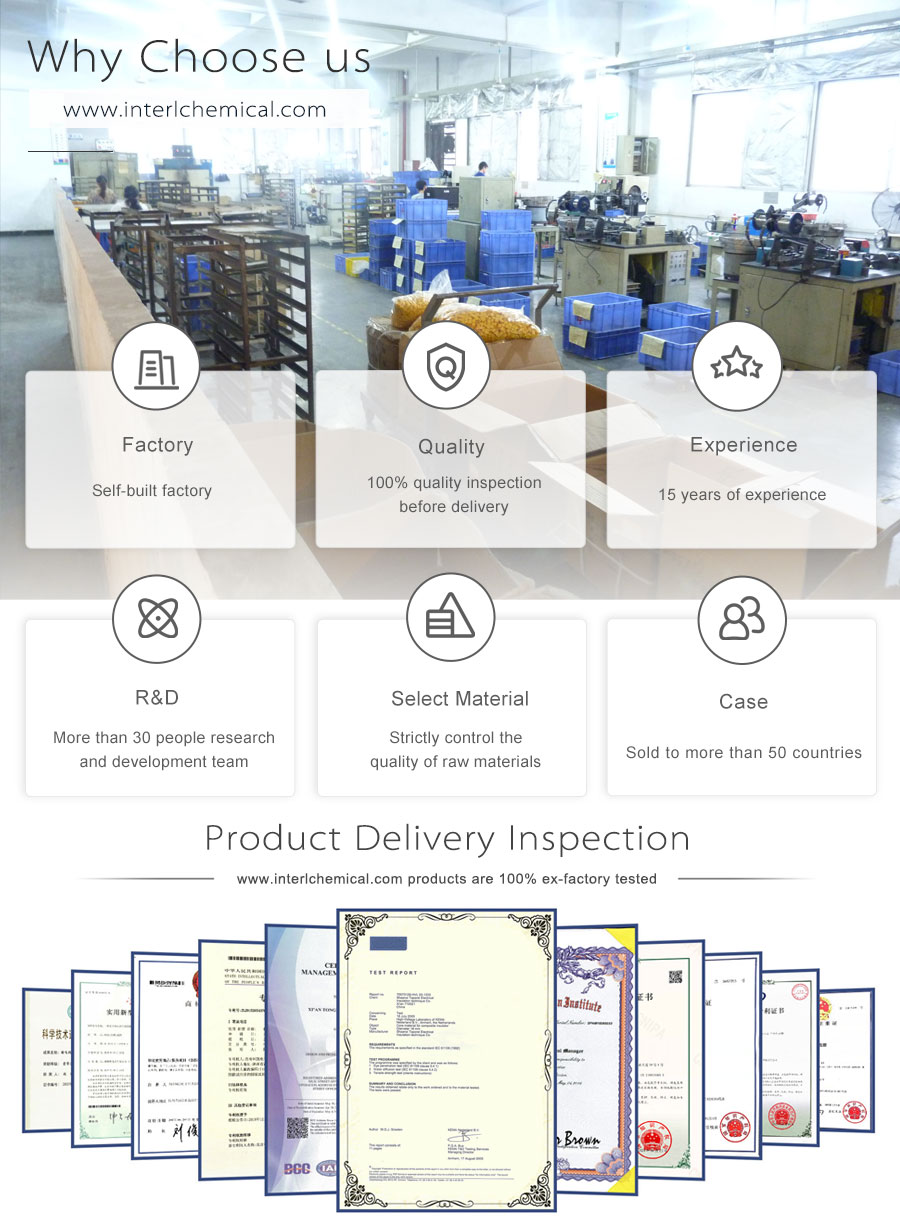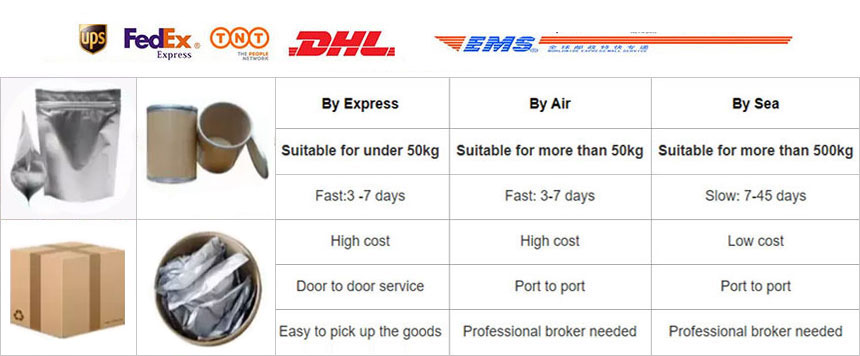Phone: 86-29-89601602
Mail: sales27@interlgroup.com
Add: Room 305 , 3/F , Haipai Decoration Office Building , Yudu Avenue , Yuncheng , Shanxi
Factory Supply Acetyl chloride liquid CAS 75-36-5 Raw Materials
Product Overview:
Acetyl chloride liquid, English name is Acetyl Chloride, molecular formula is C2H3ClO, molecular weight is 78.5, CAS registry number is 75-36-5, it is a colorless fuming liquid with strong irritating odor, Acetyl chloride liquid is used as raw material for organic synthesis. Acetyl chloride liquid is used as raw material for organic synthesis, Acetyl chloride CAS 75-36-5 is used in the production of pesticides, pharmaceuticals, new electroplating complexing agent, catalyst for chlorination of carboxylic acid, acetylation reagent, and other fine organic synthesis intermediates.
Colorless fuming liquid, with strong odor and eye irritation. Relative density 1.1051(20℃), melting point -112℃, boiling point 51~52℃, flash point 4.4℃(closed dish).Acetyl chloride Raw Materials decompose slowly in wet air and emit white smoke, hydrolyze violently into acetic acid and hydrogen chloride in contact with water, so it should be sealed and preserved.Acetyl chloride Raw Materials can be mixed with benzene, acetone, acetone and other chemicals. Acetyl chloride Raw Materials is miscible with benzene, acetone, trichloromethane, ethyl ether, glacial acetic acid and petroleum ether.
Factory Supply Acetyl chloride liquid CAS 75-36-5 Raw Materials Attributes
MF:C2H3ClO
MW:78.5
EINECS:200-865-6
Specification:Acetyl chloride liquid
Sample:Acetyl chloride liquid
Brand: Acetyl chloride liquid
Appearance: white liquid
Storage: Cool Dry Place
Brand: Globalchemical
Shelf Life: 2 Years
Test Method: HPLC
Factory Supply Acetyl chloride liquid CAS 75-36-5 Raw Materials Details
Uses and synthesis of Acetyl chloride liquid
Acetyl chloride liquid, English name is Acetyl Chloride, molecular formula is C2H3ClO, molecular weight is 78.5, CAS registry number is 75-36-5, it is a colorless fuming liquid, with strong irritating odor, Acetyl chloride liquid is used as raw material for organic synthesis, Acetyl Acetyl chloride liquid is used as raw material for organic synthesis, Acetyl chloride CAS 75-36-5 is used in the production of pesticides, pharmaceuticals, new electroplating complexing agent, catalyst for chlorination of carboxylic acid, acetylation reagent, and other fine organic synthesis intermediates.

Colorless fuming liquid, with strong odor and eye irritation. Relative density 1.1051(20℃), melting point -112℃, boiling point 51~52℃, flash point 4.4℃(closed dish).Acetyl chloride Raw Materials decompose slowly in wet air and emit white smoke, hydrolyze violently into acetic acid and hydrogen chloride in contact with water, so it should be sealed and preserved.Acetyl chloride Raw Materials can be mixed with benzene, acetone, acetone and other chemicals. Acetyl chloride Raw Materials is miscible with benzene, acetone, trichloromethane, ethyl ether, glacial acetic acid and petroleum ether.
Applications / Functions of Acetyl chloride liquid
- Acetyl chloride CAS 75-36-5 is the most commonly used acetylation reagent, and alcohol, phenol action to get acetate, and ammonia to form acetamide, and primary amine, secondary amine action to generate N-substituted acetamide.
- Acetyl chloride liquid is used in pharmaceutical industry, pesticide manufacture, preparation of acetyl derivatives and dyes. It is used as a reagent for the determination of phosphorus, cholesterol, water in organic solvents, nitroso, hydroxyl and tetraethyl lead.
- Acetyl chloride Raw Materials is the most important acyl halide, which can be prepared by glacial acetic acid and thionyl chloride or phosphorus trichloride and phosphorus pentachloride.
- Acetyl chloride liquid is used as the raw material of pesticide and medicine, and it is also the intermediate of manufacturing water treatment agent ethylene diphosphonic acid.
- Used as analytical reagent, Acetyl chloride Raw Materials is also used in the preparation of acetyl derivatives and dyes.
- Acetyl chloride Raw Materials is a very useful synthetic intermediate which is a derivative of acetic acid (a weak acid) and is used as a reagent in many industrial processes. It is a chemical reagent for acetylation in the synthesis or derivatization of organic compounds.
- It is a raw material for pesticides and pharmaceuticals, and is also an intermediate in the manufacture of the water treatment agent ethylidene diphosphonic acid, Acetyl chloride liquid is also used in the manufacture of new electroplating complexing agents.Acetyl chloride liquid is an important acetylation reagent, with a stronger acylation capacity than acetic anhydride, and is widely used in organic synthesis and dyes. It is also the catalyst for the chlorination reaction of carboxylic acid, and can be used for the quantitative analysis of hydroxyl group and amino group.
- Acetyl chloride CAS 75-36-5 As raw material for organic synthesis, it is used in the production of pesticides, pharmaceuticals, new electroplating complexing agents, catalysts for the chlorination of carboxylic acids, acetylation reagents, and a variety of other intermediates for fine organic synthesis.
- Determination of cholesterol and water in organic liquids, determination of hydroxytetraethyl lead, identification of nitroso. Used as acetylation reagent.Acetyl chloride CAS 75-36-5 Used in pharmaceutical dye synthesis.
Physicochemical Property of Acetyl chloride liquid
Colorless transparent fuming liquid with irritating odor. Acetyl chloride liquid is miscible with ether, acetic acid and benzene.
Acetyl chloride CAS 75-36-5 Colorless fuming liquid, with strong odor and eye irritation. Relative density 1.1051(20℃), melting point -112℃, boiling point 51~52℃, flash point 4.4℃(closed dish). Slowly decompose in wet air and emit white smoke, violently hydrolyzed into acetic acid and hydrogen chloride in contact with water, so it should be sealed and stored.Acetyl chloride CAS 75-36-5 Can be miscible with benzene, acetone, trichloromethane, ethyl ether, glacial acetic acid, petroleum ether and so on. Liquid is heavier than water, vapor is heavier than air. It is chemically active and can react with many compounds by complex decomposition.

Acetyl chloride Raw Materials can combine with sulfhydryl groups in proteins, so it is toxic to human body. Important acetylation reagent, acylation ability is stronger than ethanoic anhydride. Widely used in organic synthesis. Also a catalyst for the chlorination of carboxylic acids. Produced by mixing glacial acetic acid and phosphorus trichloride in cold, heating and distilling to hydrogen chloride.
production methodprocess of Acetyl chloride liquid
Industrially, Acetyl chloride Raw Materials can be produced by the reaction of ethylene with hydrogen chloride, or by the reaction of sodium acetate, sulfur dioxide and chlorine. Laboratory Acetyl chloride can be produced by reacting acetic acid, sodium acetate or acetic anhydride with various chlorinating agents. For example, acetic anhydride is reacted with chlorosulfonic acid (or hydrogen chloride, carbon tetrachloride, phosgene). It can also be obtained by reacting glacial acetic acid with benzoyl chloride (or silicon tetrachloride, phosphorus trichloride, sulfurous acid chloride, phosphorus pentachloride). Operation example 1: The dosage ratio (molar ratio) is glacial acetic acid: phosphorus trichloride = 3:1.2. Add glacial acetic acid to the reactor, stir slowly, and add phosphorus trichloride dropwise in 10-15min at room temperature. Heat up the temperature, keep 40-50 ℃ reaction 0.5h, reaction product static, separation that is Acetyl chloride Raw Materials crude, pure yield of about 70%.

Operation example 2 in 3L three mouth flask, put 360g (6mol) glacial acetic acid and 552g toluene, heated to 50 ℃ in 30min dropwise addition of 510g (3mol) tetrachlorosilicon, and at 50 ℃ insulation until the hydrogen chloride gas is no longer sharply escaped. Then carry out fractional distillation, evaporated to the top of the column temperature of 80-85 ℃ until the crude product. Boutique and then distillation, take 50-65 fractions, get acetyl chloride 400g, yield 85%. Raw material consumption quota: glacial acetic acid 850kg/t, phosphorus trichloride 1950kg/t.










